Fukushima: Having the best time in Japan’s least popular prefecture
Sign up now: Get ST's newsletters delivered to your inbox
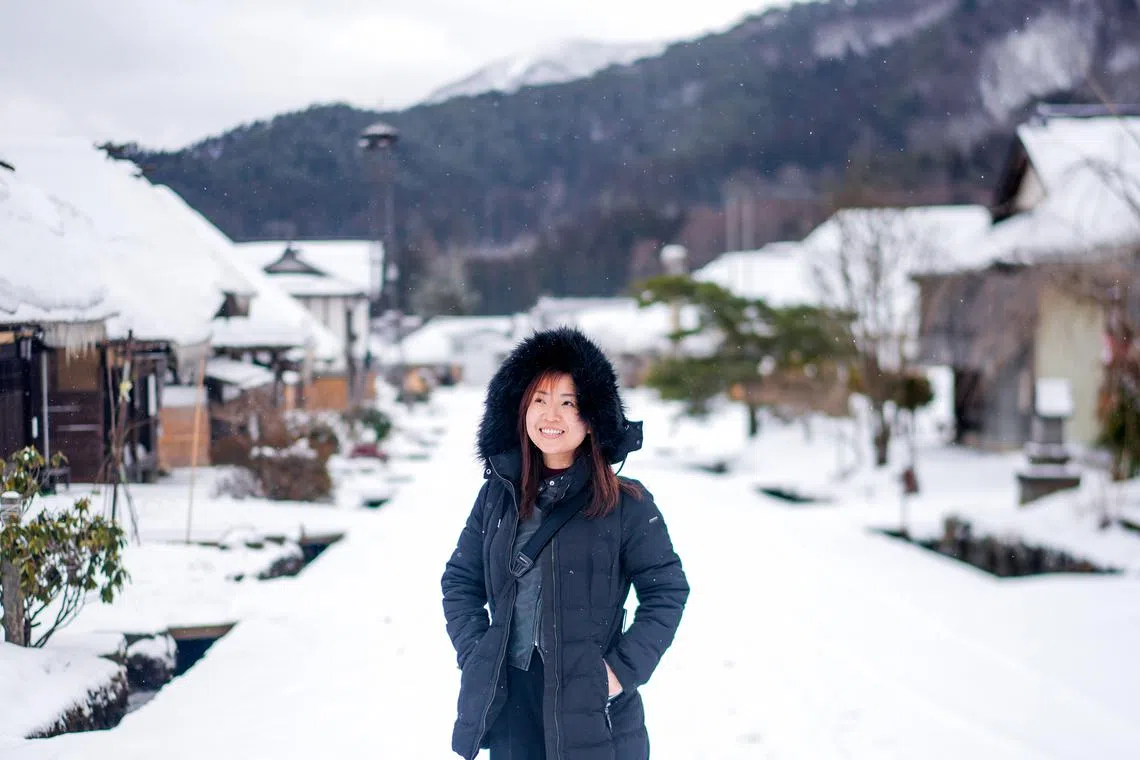
Mandy Tay, a video artist who collects stories and friends on her travels, has always been drawn to lesser-visited regions like Fukushima.
PHOTO: MANDY TAY
Mandy Tay
Follow topic:
FUKUSHIMA – Travellers are exploring Japan again in great numbers, but not the prefecture I have ventured to: Fukushima.
Its darkest moments are now being replayed in the new Netflix series The Days, which has cast the spotlight on its 2011 nuclear disaster.
But Fukushima is back and better than ever. Here are seven Japanese phrases that convey the uplifting spirit of the region.
1. Hisashiburi (Long time no see)
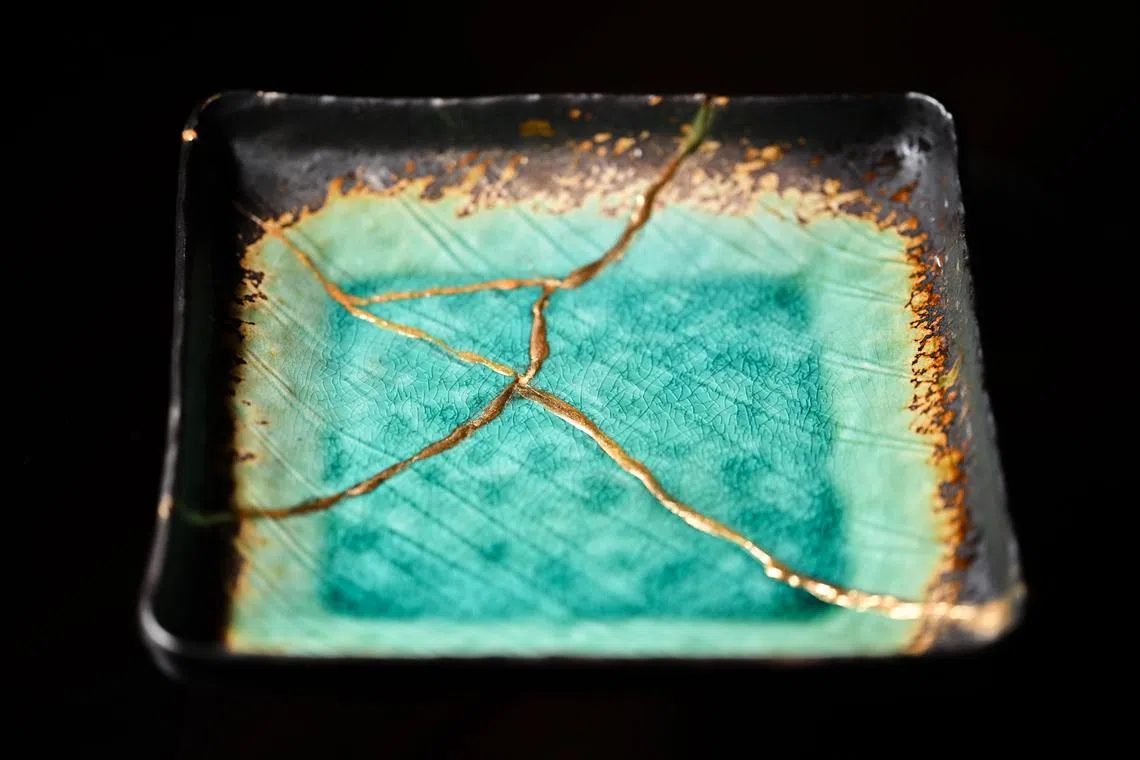
A kintsugi piece by kintsugi artist Nilofar Iyer.
ST PHOTO: LIM YAOHUI
If any country is capable of a magnificent comeback, it is Japan. After all, this is the land of kintsugi, the art of putting broken pottery pieces back together with gold-laced lacquer. With a deft hand, imperfect shards are reborn, more stunning and stronger than before. Very much like Fukushima.
Tourist numbers have more than doubled since the accident. This is especially so in Aizuwakamatsu, the region’s best-loved tourist spot. A castle town with a samurai history and lush nature, it is also known for award-winning sake.
At Aizuwakamatsu, located 100km from the nuclear plant but protected by a mountain range, radiation levels are lower than those in Tokyo.
2. Okiru (Get up)
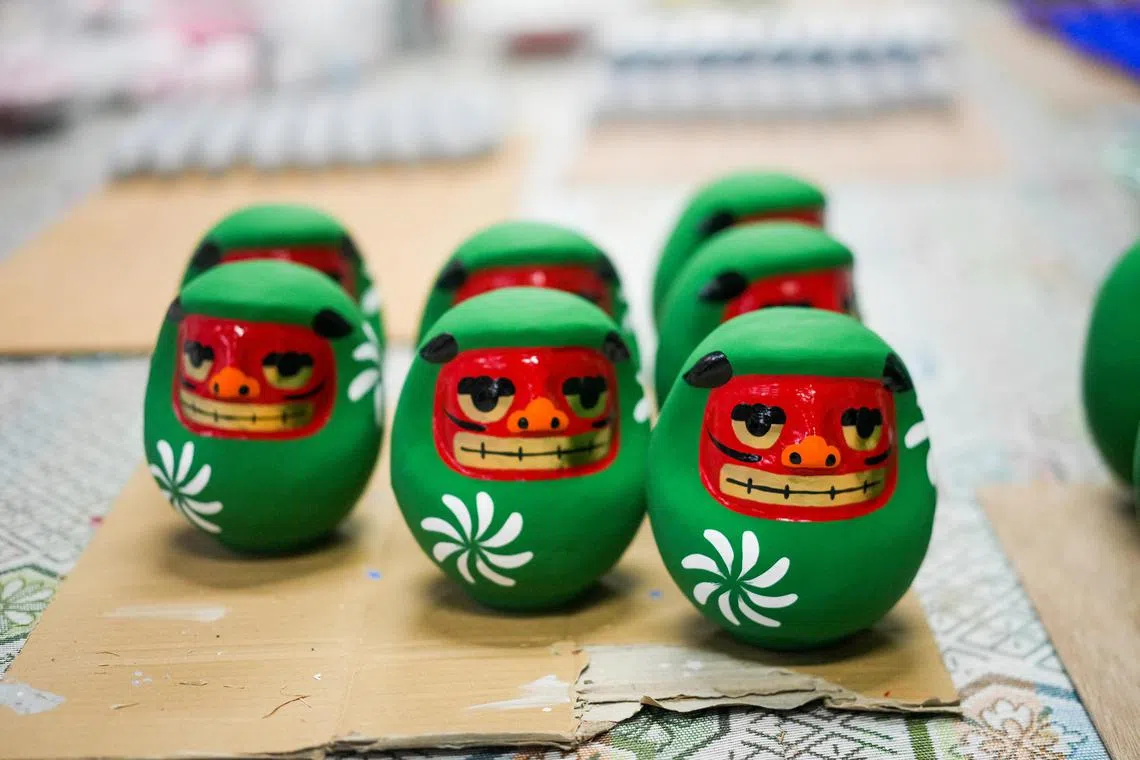
The traditional Japanese daruma doll, symbolising perseverance and luck, is also a symbol of Shirakawa city.
PHOTO: MANDY TAY
The round, scowling daruma doll, with roots in Zen Buddhism, represents perseverance and luck.
At Daruma Land (30 Yokomachi, Shirakawa, Fukushima), I meet a professional daruma designer, play a daruma racing game on a giant video screen, and buy a doll with a blank face so I can paint a scowl on it at home.
3. Daisuki (My favourite)
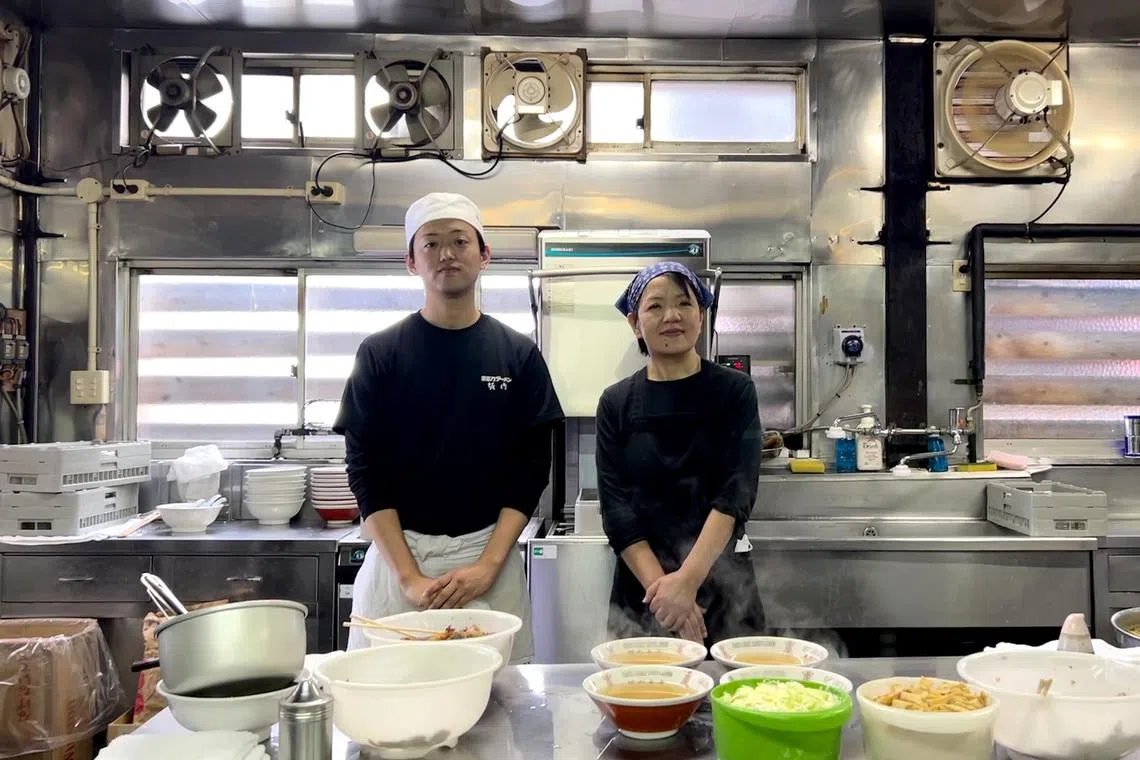
You may have seen Kitakata Ramen Ban Nai in Tokyo, but dining in the original store in Kitakata and being served by the mother and son of the family-owned chain is a more intimate experience.
PHOTO: MANDY TAY
How did a nondescript two-seater shio ramen shop snowball into a global franchise with 64 branches?
In 1959, a couple in their 20s set down two tatami seats and served handmade flat, curly, chewy noodles with a pork bone-based soup flavoured with soya sauce.
Today, their main shop, Bannai Ramen (7230 Hosoda, Kitakata, Fukushima), is helmed by their exuberant 29-year-old grandson who enthuses about Singapore: “I would love to see your famous airport.”
Next to Sapporo and Hakata ramen, Kitakata ramen has become Japan’s most popular ramen – and now mine, too. Daisuki.
4. Abunai (Danger)
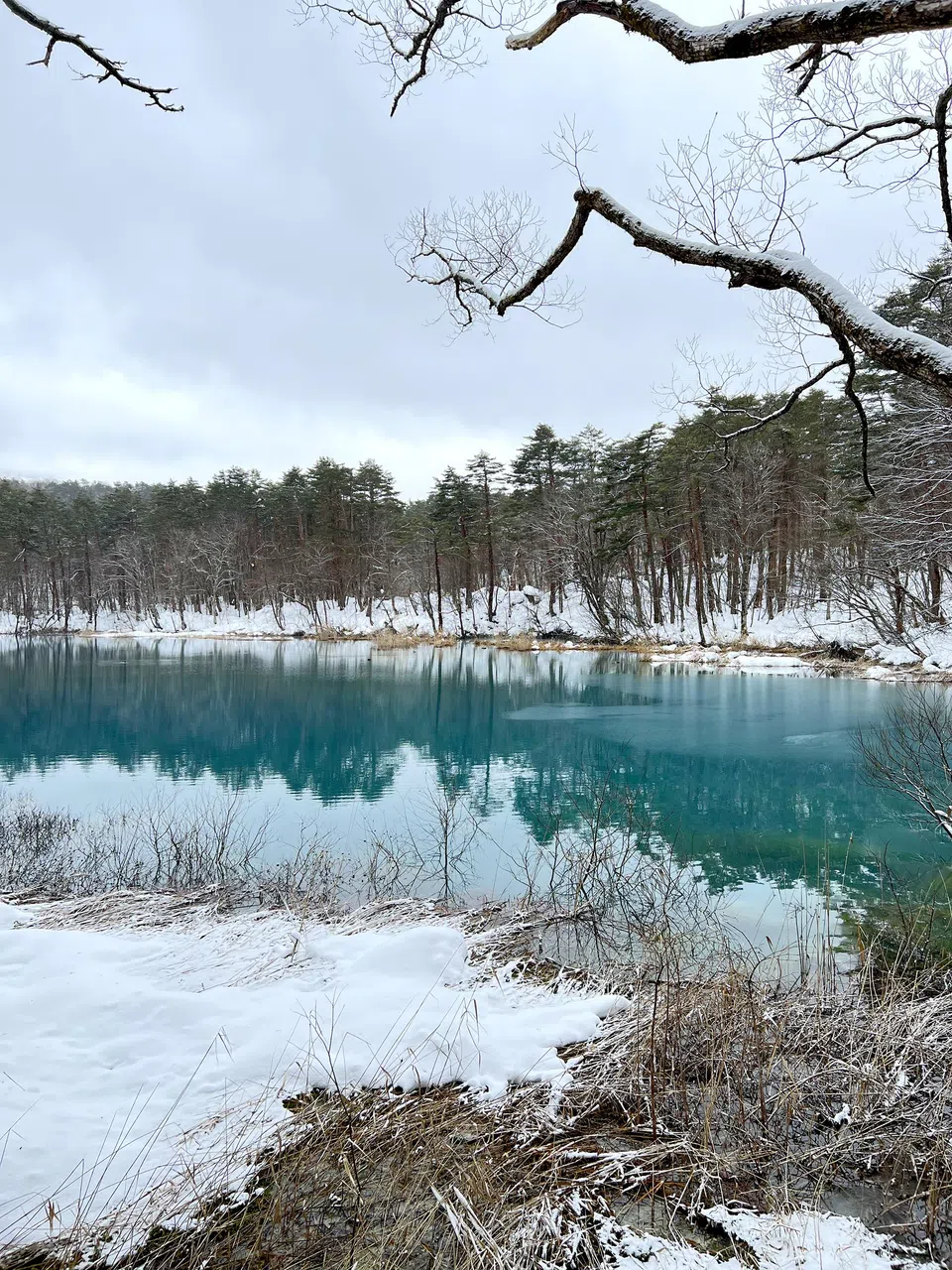
Snowshoeing in Goshiki-numa at the foot of Mount Bandai is a great way to enjoy the snow if you lack the sense of balance to ski or snowboard.
PHOTO: MANDY TAY
There is really nothing dangerous about the snowshoe walk in Goshiki-numa. But it is dangerously addictive. I have finally found a snow activity that leaves my limbs intact.
I enjoy every moment sloshing around in a serene white forest. Take along some honey and drip it on the fresh snow for instant Japanese ice kacang.
For more information, go to str.sg/i3wB
5. Ikigai (A reason for being)
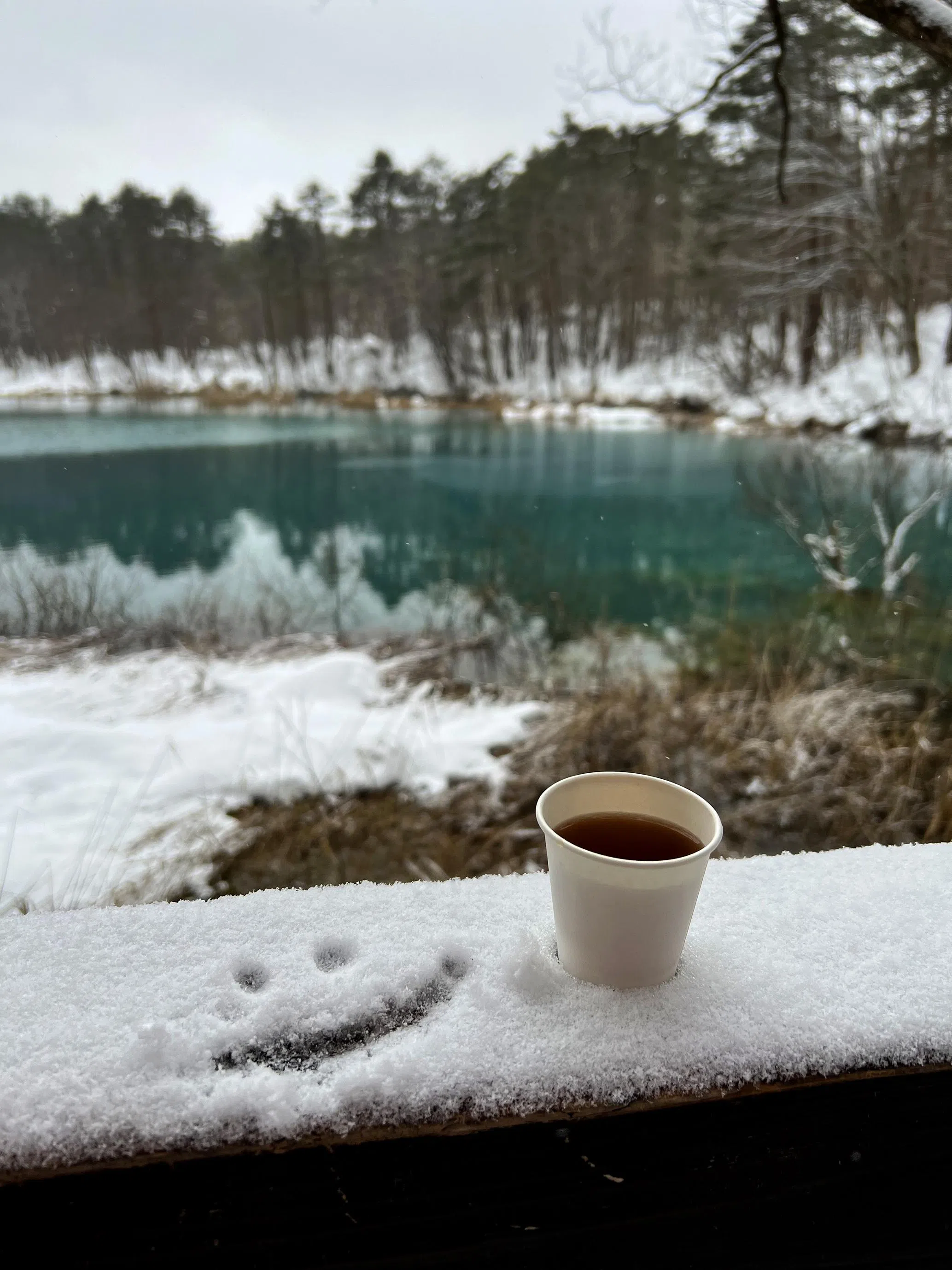
Find Ikigai, the Japanese secret to a long and happy life, in life’s little pleasures.
PHOTO: MANDY TAY
According to the Japanese, everyone has a reason for living, known as ikigai. And at Aizuyanaizu station (Shimonakadairako Yanaizu, Kawanuma District, Fukushima), I see it in the form of a jolly elderly man who is building a snowman.
He is the station manager, and he creates the endearing mascot to delight passengers on passing trains. Grinning from ear to ear and standing next to his snowy doppelganger, he waves at us. He is the living epitome of ikigai, achieving this state of being, one snowman at a time.
6. Seiko (Success)
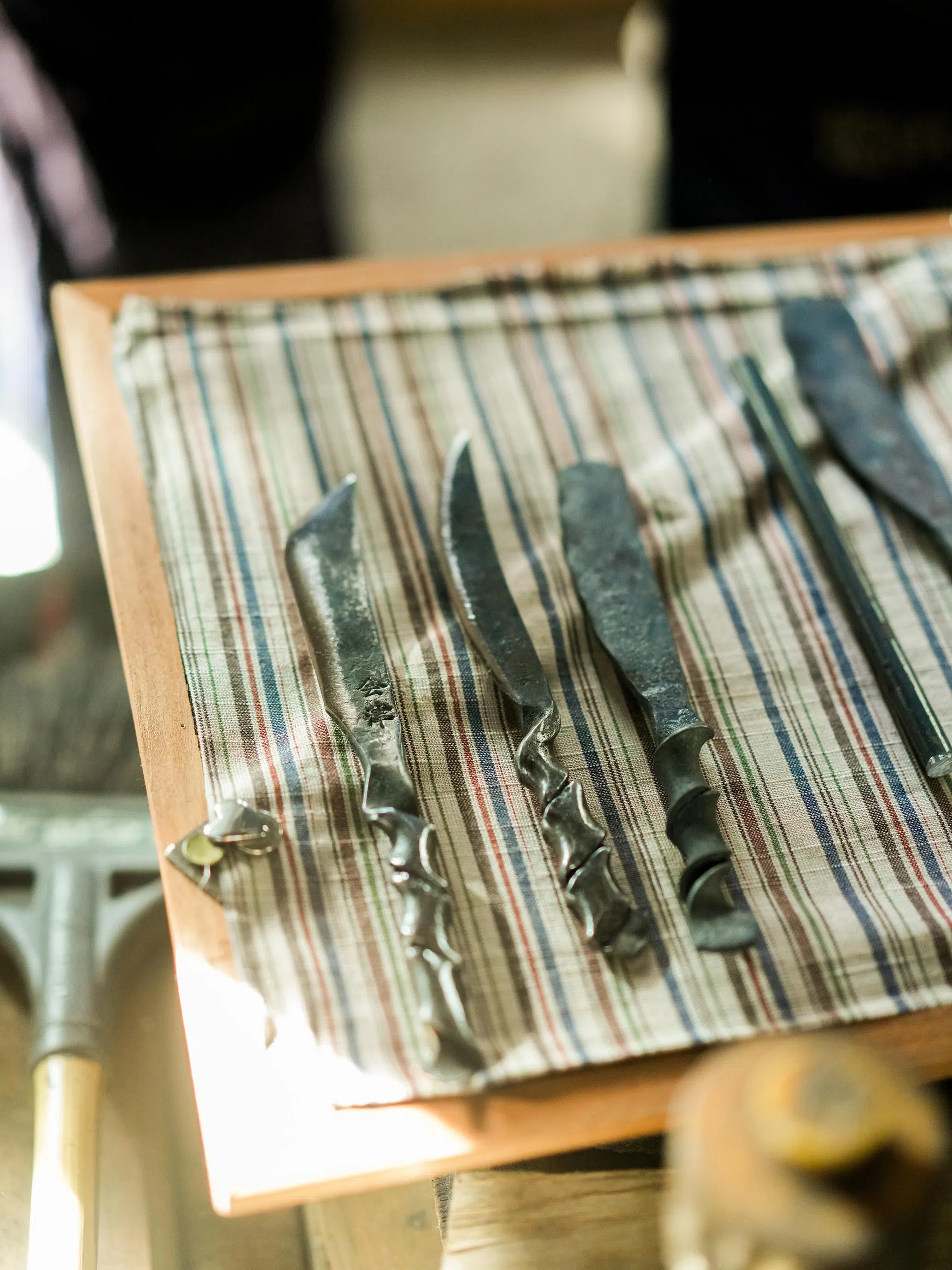
Feeling stressed? How about pounding a red-hot piece of metal at a letter opener-making workshop?
PHOTO: MANDY TAY
In all my moments of rage, I have not imagined myself wielding a scorching piece of iron and banging it furiously.
Decked out in a professional white robe and cap, I step into the workshop of Tsutsumi Production (5-1 Babamachi, Aizuwakamatsu, Fukushima), ready to make a letter opener.
It is easy to imagine the samurais of a past era walking in this town. Four centuries ago, the town would be teeming with them. However, in, 1876, a royal edict was issued to ban sword-wearing. This was an attempt to eliminate the class society where the samurai ranked the highest.
Overnight, the thriving sword-making business was vanquished and the artisans became blacksmiths instead.
A loud clang brings me back to 2023 and my instructor Marina-san offers this advice: “The important thing is to imagine and hit it.”
Her optimism fuels my drive to flatten the unwilling piece of metal.
Then comes my favourite part, where she and her colleague assist me in twisting the flaming red piece of metal into a handle. Creation, resilience and teamwork in a single move. Also, everyone leaves unscathed.
7. Mo Hitotsu (One more)
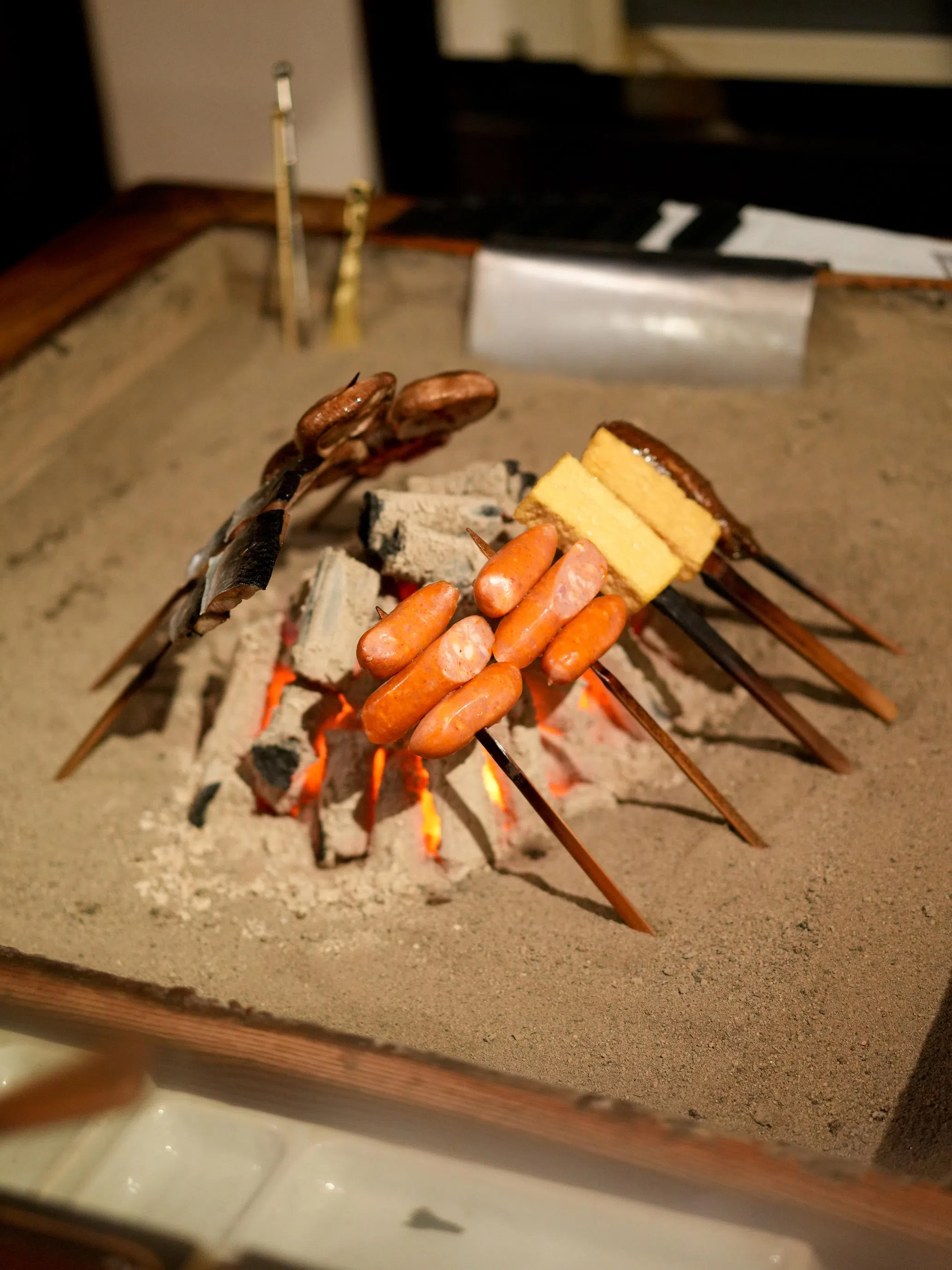
Slathered in sweet and savoury miso glaze, eating miso dengaku has been a winter tradition since the 1500s.
PHOTO: MANDY TAY
To keep warm on a frosty day, I dive into a 200-year-old warehouse repurposed as a robatayaki. Earlier, I was given a choice – an Aizu speciality called miso dengaku (skewered miso-layered food cooked on fire) or French-Italian for lunch. Always take the local option.
At Mitsuya (Omachi 1-1-25, Aizu-Wakamatsu City, Fukushima), I huddle at the bar counter, gazing expectantly at the open flames roasting my food. The shop closes at 4.20pm, so come for a hearty late lunch after some vigorous metalworking.
Before I leave, I ask for another serving of half-mashed rice slathered in miso.
After a week in Fukushima, I return to Singapore thinking about the phrase mo hitotsu (one more), knowing I will be back in Japan for more ikigai-filled experiences. Meanwhile, my blank daruma doll is waiting to be reborn, like Fukushima.
Seven more things to do in Fukushima
1. Stroll in Nanko Park, Japan’s oldest public park, and sip green tea.
Where: Nanko, Shirakawa city, Fukushima
2. Visit an ancient travel rest stop. Ouchi-juku was a post station for travellers hundreds of years ago. Arrive at 8am to time-travel as you walk past the thatched-roof houses, dating from the Edo period, that line its main street.
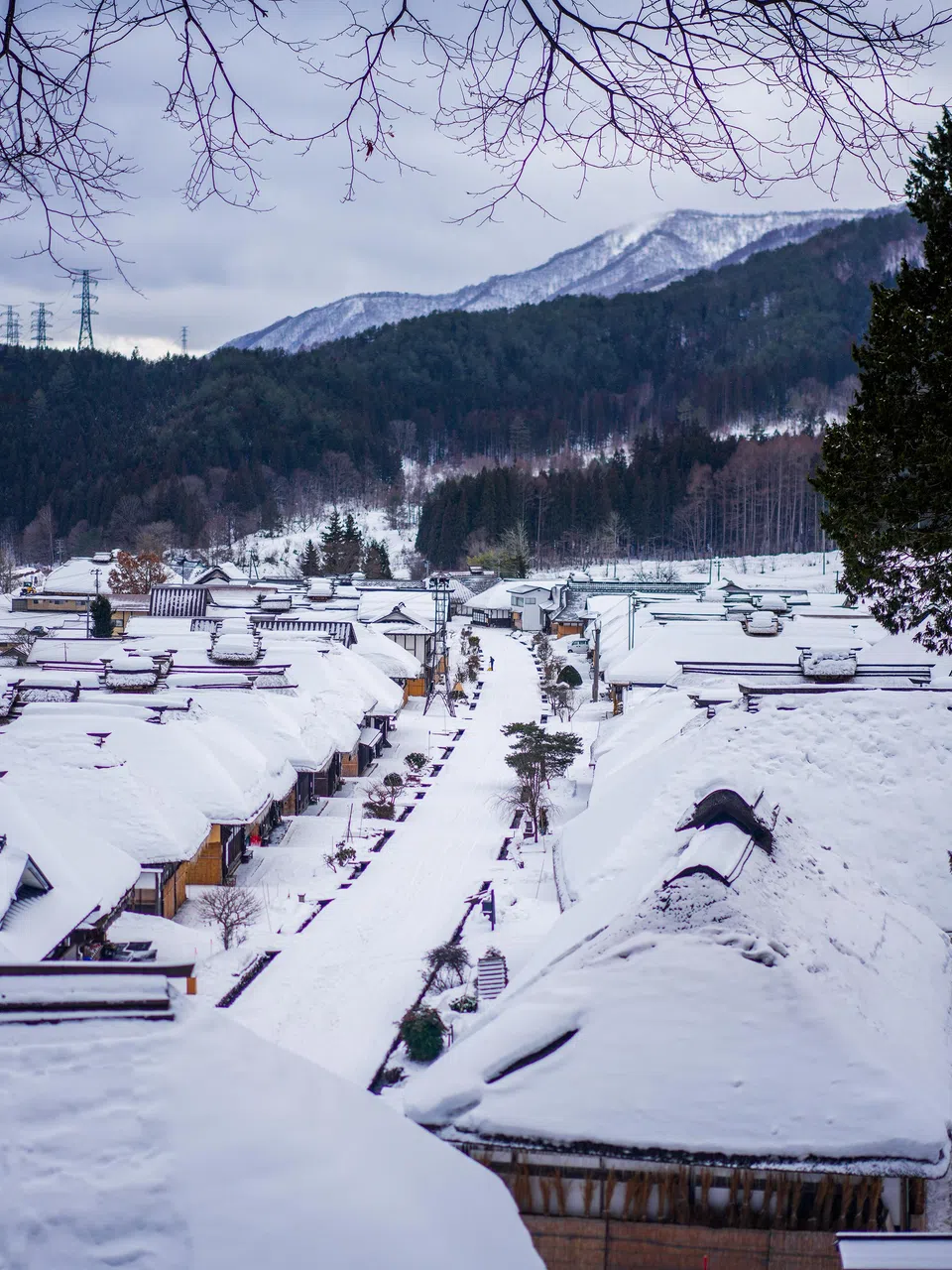
Come early at 8am and time-travel back to the Edo period in Ouchi-juku.
PHOTO: MANDY TAY
Where: Ouchi-juku, Shimogo, Minamiaizu District, Fukushima
3. Hike up from Michi-no-Eki Ozekaido Mishima-juku rest stop for a splendid view of Tadami Bridge. When I get there, friendly locals give up their spot for me to see the train passing by the river on the bridge. Trains run only on weekdays.

A 15-minute walk from Michi-no-Eki Ozekaido Mishima-juku brings you to the spectacular Tadami River Bridge Viewpoint.
PHOTO: MANDY TAY
Where: A 15-minute walk up the stairs from Michi-no-Eki Ozekaido Mishima-juku (Tenyahara 610 Kawai, Mishima town, Onuma district, Fukushima)
4. Take home a hand-painted piece from a lacquer workshop at Kinomoto Japanese Lacquerware & Kirinoko Dollhouse. Prices start at 1,200 yen (S$11.60). Reservations are required. Cat lovers will rejoice at the sight of an imaginative dollhouse featuring miniature cats. Go to www.aizu-kinomoto.com

A vivid miniature cat dollhouse in Kinomoto Japanese Lacquerware & Kirinoko Dollhouse.
PHOTO: MANDY TAY
Where: 8859, Aza-Tenmanmae, Kitakata city, Fukushima
5. Try a frozen sake, then take home a bottle of the driest sake in Japan from the Asaka distillery. It is also one of the world’s smallest distilleries, with only three members of staff.
Where: 1-178 Sasagawa, Koriyama, Fukushima
6. Learn about the heart-breaking history of the White Tiger Force at the Byakkotai Memorial. In 1868, 20 young samurais saw what they thought was a castle on fire during a siege and committed seppuku (ritual suicide by disembowelment) with one failed attempt.
Where: Bentenshita, Ooazayahata, Ikki-machi Yahata, Aizuwakamatsu, Fukushima
7. Next to the memorial, you will find Sazaedo Temple. Sazae means turban shell and, yes, the memorial is shaped like one.
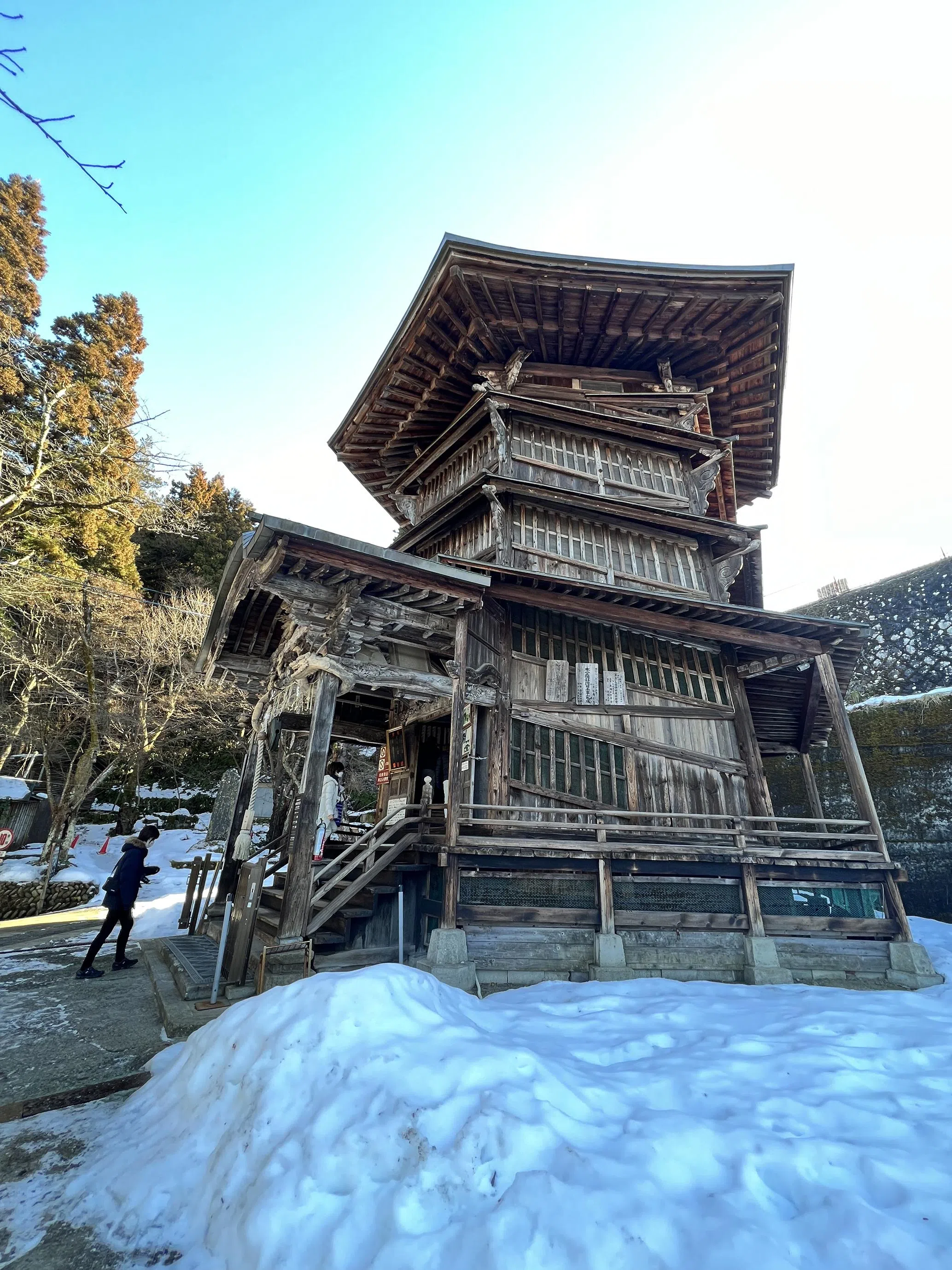
Sazaedo Temple, a Buddhist temple built in 1796.
PHOTO: MANDY TAY
Inside is a double-helix slope. What this means, without bringing in any Nolanesque plot lines, is that you will not meet anyone going in the opposite direction. This one-way system feels curiously like a metaphor. Is it life? Is it destiny?
In 1995, it was named a National Important Cultural Property.
Where: 1404 Bentenshita, Ikki-machi Yahata, Aizuwakamatsu, Fukushima
Getting there
Hop on the shinkansen bullet train at Tokyo station and arrive at Shin-Shirakawa station in 81 minutes. Tickets cost between 5,000 and 8,000 yen one way.
Stay
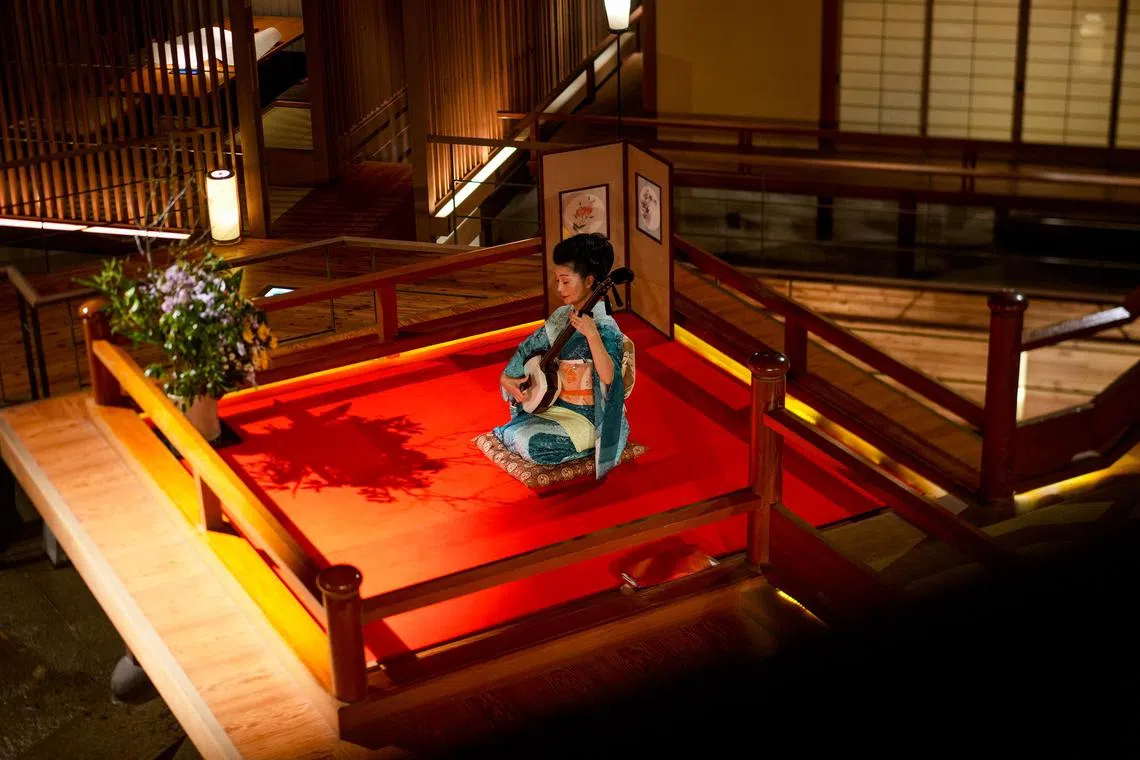
Entering Aizu Ashinomaki Hot Spring Resort Hotel Ookawaso is like stepping into a famous scene of an anime series.
PHOTO: MANDY TAY
- Aizu Ashinomaki Hot Spring Resort Hotel Ookawaso (984, Shimodaira, Ashinomaki, Ootomachi, Aizuwakamatsu, Fukushima), nestled along the beautiful valley of Okawa River, has spectacular outdoor onsens. Prices start at 34,230 yen a night.
- Urabandai Grandeco Tokyu Hotel (Arasunasawayama Hibara, Kitashiobara, Yama District, Fukushima 969-2701) is directly connected to the ski area in Urabandai and has rooms with mountain views starting at 28,380 yen a night.
- Kutsurogijuku, Shintaki, set in an amazing landscape of multiple waterfalls and located a 15-minute bus ride from JR Aizuwakamatsu Station, is a ryokan with rooms starting at 31,020 yen a night.
Mandy Tay, a video artist who collects stories and friends on her travels, has always been drawn to lesser-visited regions like Fukushima. A solo traveller, her only fear is how deeply she will fall in love with the place wherever she goes.
The writer was hosted by Follow Me Japan and Arukikata.

